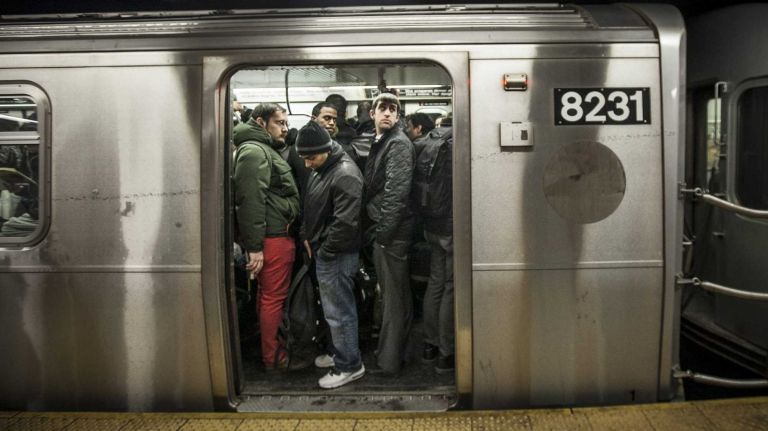
Annual subway ridership last year reached a 65-year high of 1.7 billion passengers, with Brooklyn leading the way, according to MTA statistics provided to amNY.
Subway ridership grew 3.2% between 2012 and 2013, adding nearly 53 million rides over the year. The level of riders last year was the highest seen by the subway system since 1949.
The havoc Superstorm Sandy wrought on the subway system in 2012 helped spur the year-over-year ridership boost.
Still, when accounting for the service disruptions and free fares, average ridership increased by more than 1%.
The data underlines the system’s impressive rise since ridership reached its lowpoint in the early 1980s, according to Gene Russianoff of The Straphangers Campaign.
“Here we are, 32 years later, it’s dramatically reversed itself,” Russian off said. “This means the system is being used and it’s making for a healthier economy, more social mobility.”
Still, the subway system has not physically changed much to meet the growing demand, though the MTA is close to seeing the No. 7 train extended and the first leg of the Second Avenue Subway completed. Further, the signal system used to manage trains is obsolete.
“One of the things that’s helped New York City Transit cope with the new ridership is that people are not riding it as much in the traditional peak hours as they used to be,” said Bill Henderson, executive director of the Permanent Citizens Advisory Committee to the MTA. “The peaks are flattening out more.”
While Henderson said late-night ridership has increased as less traditional work hours and destinations become more commonplace, he added that “weekends is another area where ridership is taking off.”
Indeed, average weekend ridership, though covering a two-day period, is outpacing the growth in ridership of an average weekday. An average weekend last year saw increased ridership by 2.5%, or more than 143,000 subway riders, while an average weekday last year grew 1.6%, or by 85,000 more riders.
Among the boroughs, Brooklyn is adding riders at the fastest clip. With a year of events at Barclays Center, Brooklyn pulled in 15.5 million more riders last year than in 2012, a 4.4% increase. Manhattan increased its ridership 3.1%, or more than 28 million riders.
The L line, meanwhile, had the largest percentage increase in the entire subway system. The L line packed in 5.3% more riders from the previous year, or 6,000 riders per average weekday. The G and the F lines also grew, each increasing its average weekday ridership by more than 4%.
“Brooklyn, from all indications, is definitely where the action is right now,” Henderson said.
The MTA had caught onto the trends in Brooklyn’s growth and is adding more service to these trains. As part of a $4.3 million package to add service on eight lines this June, the F train will get an extra round trip, while the L train will get eight new roundtrips during the week and eight over the weekend. The G line will also get new service to catch up to the explosion in ridership on the only line that serves just Brooklyn and Queens.
Looking at ridership further into the future, the MTA expects its entire system to reach 3.1 billion trips in 2030. Over the two decades, New York City will reach a population of more than 9 million people.


















